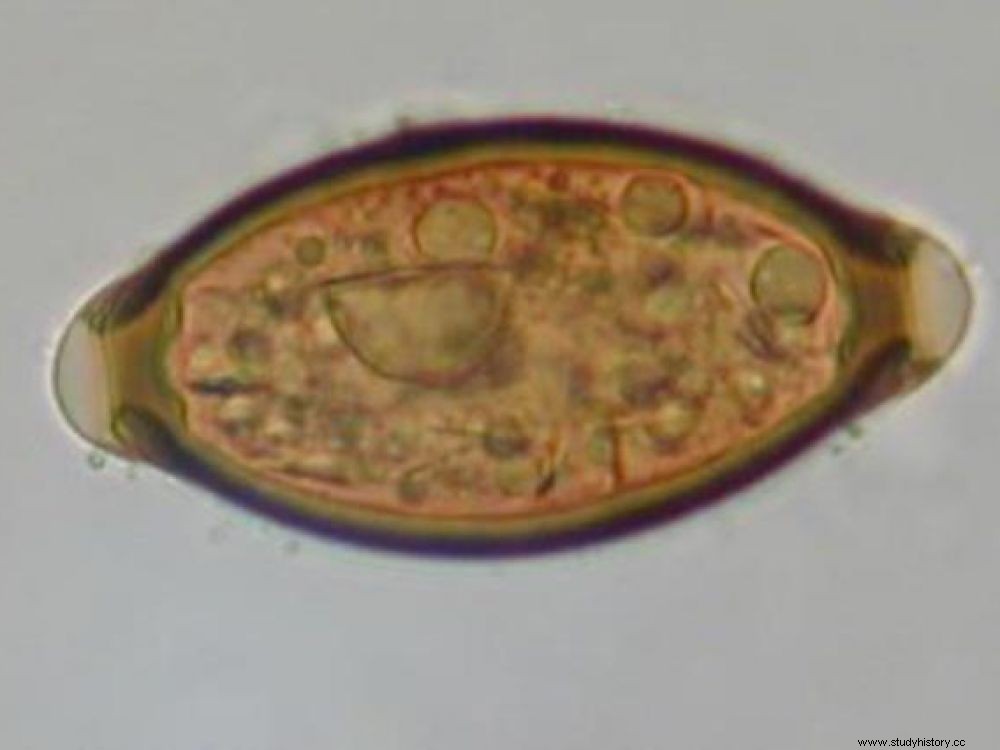According to a study by the University of Oxford, intestinal infections due to Helminths (parasitic worms) were common in medieval Europe. Analyzes of bones across the continent have allowed researchers to determine the frequency of these diseases.

Photomicrograph of an egg of the intestinal parasite Trichuris trichiura , found at one of the sites during the study.
Helminths, which include tapeworms and roundworms, are parasitic worms that can cause more or less serious illnesses in humans. While some infections cause only mild symptoms, others are associated with chronic malnutrition and physical impairment, especially in children. These worms are transmitted by eggs in human feces and can contaminate soil and water. Today, it is estimated that they infect 1.5 billion people worldwide. However, helminth-related diseases are among the most neglected in the world, according to the World Health Organization. While these parasites are now widespread around the globe, researchers from the University of Oxford (UK) suggest that they were endemic in Europe and particularly common in the medieval period. Their study, in open access in the journal PLOS Neglected Tropical Diseases, was published this Friday, August 27, 2020.
589 samples from seven European sites
Helminths, which include tapeworms and roundworms, are parasitic worms that can cause more or less serious illnesses in humans. While some infections cause only mild symptoms, others are associated with chronic malnutrition and physical impairment, especially in children. These worms are transmitted by eggs in human feces and can contaminate soil and water. Today, it is estimated that they infect 1.5 billion people worldwide. However, helminth-related diseases are among the most neglected in the world, according to the World Health Organization. While these parasites are now widespread around the globe, researchers from the University of Oxford (UK) suggest that they were endemic in Europe and particularly common in the medieval period. Their study, in open access in the journal PLOS Neglected Tropical Diseases, was published this Friday, August 27, 2020.
589 samples from seven European sites
To reach such conclusions, the researchers analyzed graves from seven sites across Europe. A total of 589 samples dating from 680 to 1700 were taken into account during the study. Samples were taken from the pool of skeletons of all ages and sizes. This large panel thus enabled them to determine whether parasitic infections were more common in a certain category of the population. Results:two soil-borne nematodes - Ascaris spp. andTrichuris trichiura - were identified at all sites, and two cestodes derived from food - Diphyllobothrium latum andTaenia spp. - were found at four of the seven sites.
Infection rates similar to modern populations
After further analysis, nematode infection rates in the medieval population were estimated at 8.5% for T. trichiura and 25.1% for Ascaris , rates similar to those observed in modern populations. There was no difference by gender or population size; infection rates were more common in children. "Like the prevalence (ratio of the number of cases to the total population, editor's note) soil-transmitted helminth infections in the Middle Ages mirrors that of modern endemic countries, factors affecting the decline of helminths in Europe may also inform campaigns modern interventions" , say the researchers. "Pests in past communities can tell us a lot about living conditions, including hygiene, sanitation and even cooking practices" , they conclude.
